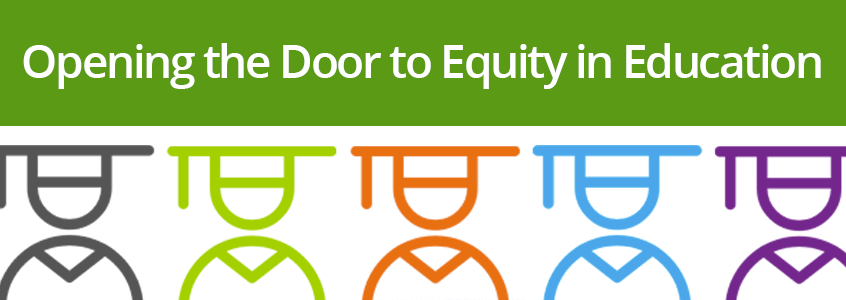- BLOG HOME
- »
- Clearinghouse News
- »
- A Data-Driven Approach Needed to Close the Equity Gap in Education

A Data-Driven Approach Needed to Close the Equity Gap in Education
On October 6, the National Student Clearinghouse hosted a panel session, “Opening the Door to Equity in Education,” highlighting how vulnerable populations, based on socioeconomic and cultural factors such as race and ethnicity, are getting left behind in the current education-to-workforce ecosystem. This panel session’s key focus was around the academic impact the pandemic is having on underserved populations.
The Clearinghouse’s data reveals that the pandemic is having a significant impact on college enrollments. Most notably, the fall 2020 enrollment report shows a 12% decrease in African Americans enrolling in community colleges; a 10% decrease in enrollments preceded this during the summer semester. Further, Michael Collins, vice president of programs, JFF, commented, “There have been some real challenges that we’ve seen of late when we look at the outcomes from the pandemic and racial unrest across the country that have really focused us in on whether or not our education and training system, have been robust enough to lift all people, to the credentials and skill levels that they need actually to be viable in our economy.”
In addition to causing disruptions on college campuses across the country, the pandemic has created significant job disruptions. It is imperative to retool and reskill displaced workers. Higher education and career training are essential. Lying in the path of these displaced workers are significant structural barriers in higher education that need to be addressed. The panelists collectively expressed that long-term system change requires the entire learning ecosystem, including academic and workforce certifying institutions, credentialing organizations, employers, and learners.
“Intentionality is key to addressing equity,” Deborah Santiago, Ph.D., CEO, Excelencia in Education, shared. “How do you intentionally rethink the old ways of doing things that inhibit equity in transforming the learning ecosystem?”
A vital piece of this puzzle is having access to trusted, verified data to identify inequities. “Many of our schools and colleges are increasingly using data to aid in not only identifying equity gaps in education but also and using the analysis of data and seeking ways to bridge the education, equity gap,” added Eileen Baccus, Ph.D., President Emeritus, Northwestern Connecticut Community College.
Karen Stout, Ph.D., CEO, Achieving the Dream, discussed how community colleges use data to interpret equity gaps, “Our best Achieving the Dream colleges know their data qualitatively and quantitatively. They confront their data, they communicate the data, and they have a shared understanding of their equity and race narrative on their campus because they’re interpreting equity gaps, as signals that their current practices are not working.”
The panelists also covered the importance of career training for underserved populations who cannot pursue or complete their higher education. In fact, according to Dan Domenech, Ph.D., Executive Director, American Association of School Administrators, “Less than 40% of students that graduate high school go to college and get a four-year degree.” How can the learning ecosystem prepare the 60% of students that do not graduate college?
Having a record and a process that documents the progression of all lifelong learning of formal education, continuing education, competency-based education, and career and technical education can benefit people regardless of where they learn their skills. This is especially important for vulnerable populations that may not have a formal, documented college degree.
To that end, the Clearinghouse recently announced that it has expanded its data collection and has introduced new academic records, called Learning and Employment Records (LER), that will go well beyond a traditional education to include credentials and skills that people attain through lifelong learning. It is an opportunity to bridge the gap between learners and employers by reimagining how to recognize, record, and make available students’ achievements wherever and whenever they learn.
Watch the “Opening the Door to Equity in Education” panel recap here to learn more.
“There have been some real challenges that we’ve seen of late when we look at the outcomes from the pandemic and racial unrest across the country that have really focused us in on whether or not our education and training system, have been robust enough to lift all people, to the credentials and skill levels that they need actually to be viable in our economy.”
Michael Collins
Vice President of Programs, Jobs for the Future


